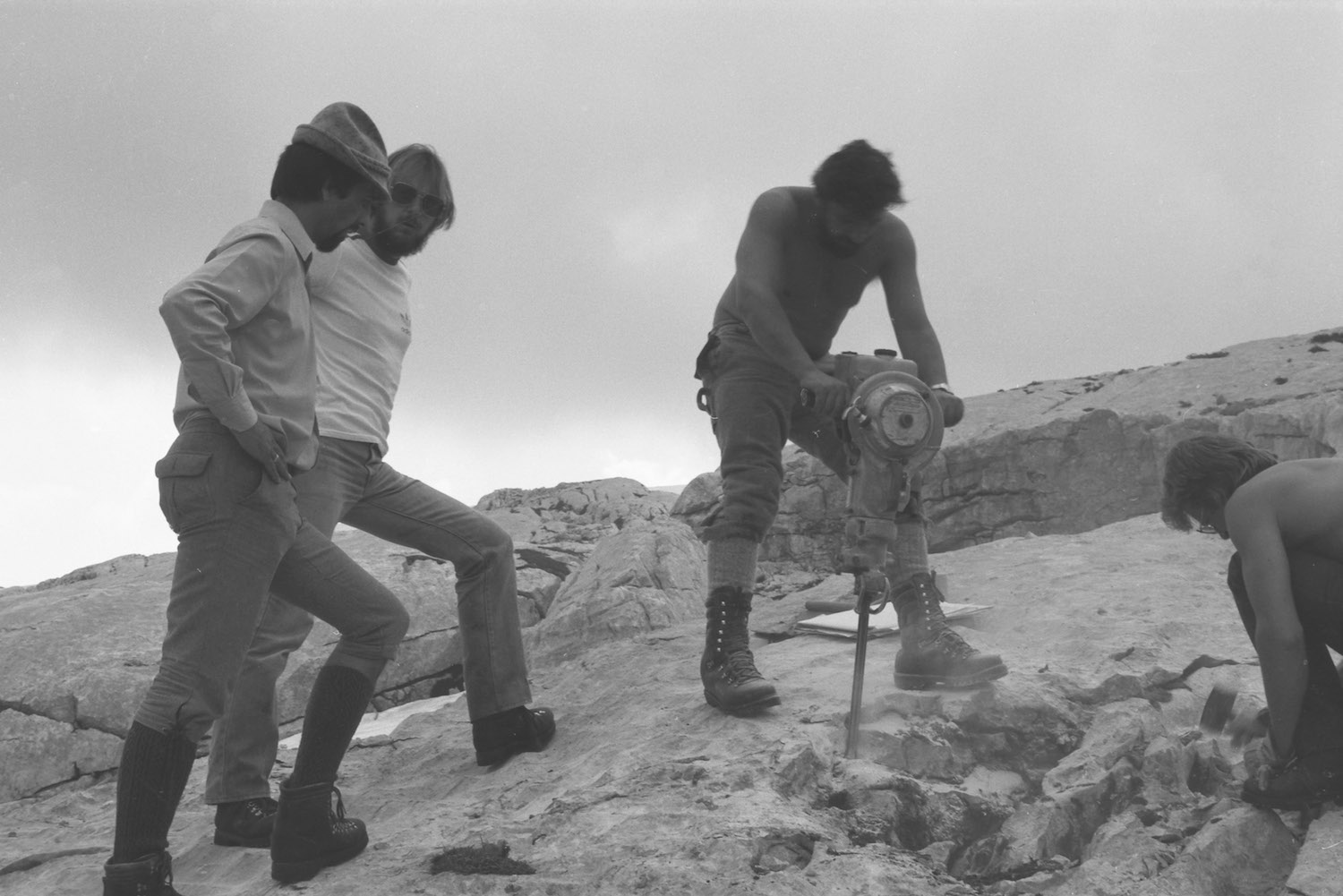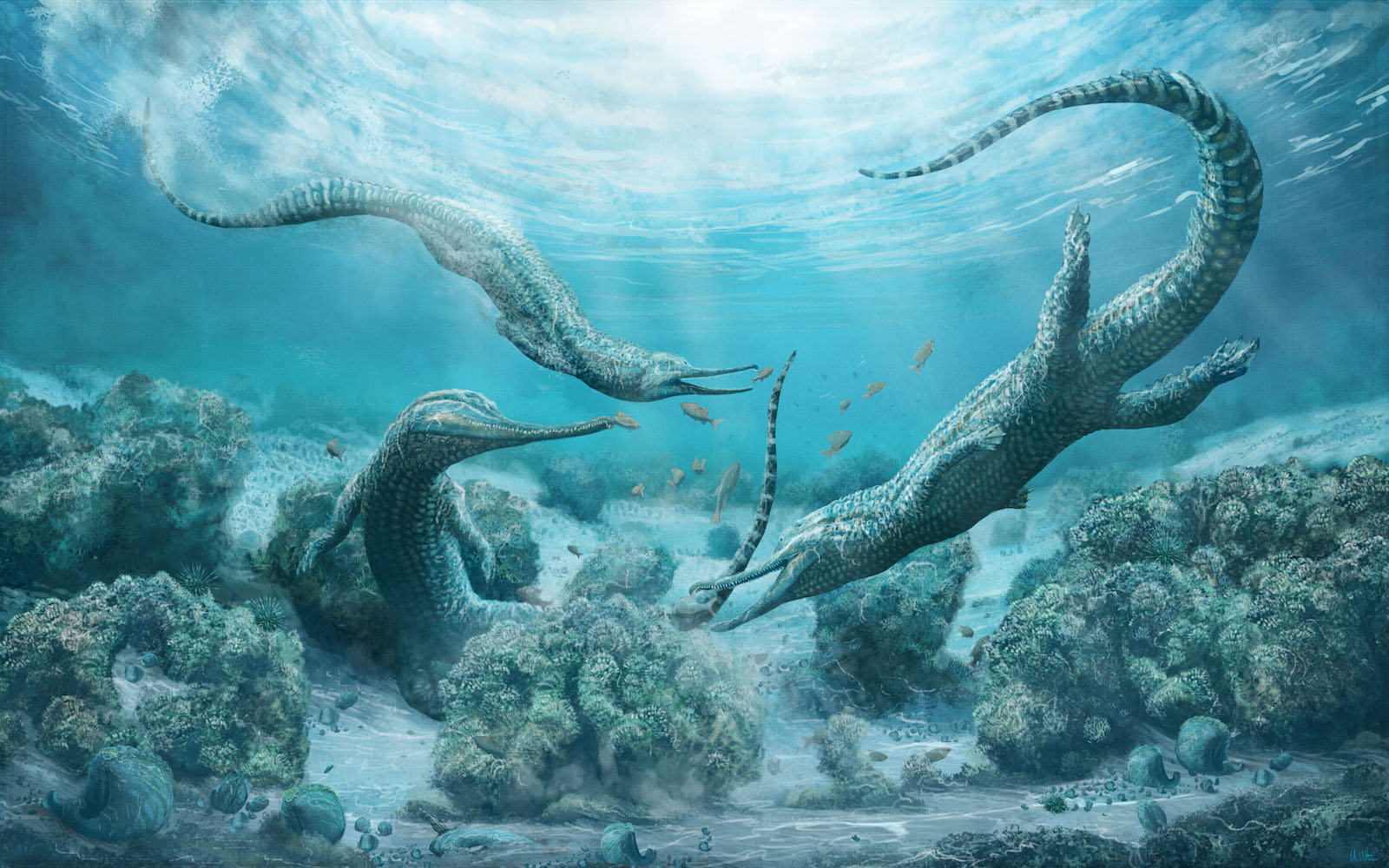Car-Size 'Sea Monster' Terrorized Triassic Oceans
Researchers excavated the remains of four of these now-extinct sea monsters from the rocky slopes of the Austrian Alps. But even at 13 feet long (4 meters), these creatures — known as phytosaurs — weren't fully grown.
The phytosaurs were only about 8 years old when they died, and they were "still actively growing," according to a bone analysis, said study lead researcher Richard Butler, a professor of paleobiology at the University of Birmingham in the United Kingdom. [Photos: Early Dinosaur Cousin Looked Like a Croc]
Given the difficulty of bringing these fossils to light, it's remarkable that this new species — dubbed Mystriosuchus steinbergeri — is finally being introduced to science. Its species name honors Sepp Steinberger, a member of a local caving club, who discovered the fossils while climbing the "dead mountains," a remote area of the Austrian Alps, in 1980. A team from the Natural History Museum in Vienna excavated the remains two years later and had to use a helicopter to transport the fossils off the mountain, which was nearly 1.2 miles (2 kilometers) high.

The museum cleaned off the fossils and put them on display. But "because there are very few specialists on phytosaurs — this particular group of fossil reptiles — it took many years before they were studied," Butler told Live Science. Finally, in 2013, a team of British, French, Austrian and Swiss researchers began examining the ancient remains.
Phytosaurs look like a mix of the modern crocodile, alligator and gharial, although they lived long before those animals and are not particularly close relatives of them, Butler said. "This is an example of 'evolutionary convergence,' where distantly related groups evolve to look alike because they live in similar environments," he said.

The phytosaur is a semiaquatic reptile whose remains are usually found near freshwater lakes and rivers. (Although it lived during the early dinosaur age, the phytosaur is not a dinosaur.) However, these particular fossils were found in sediments from an ancient ocean environment, tens of miles from the Triassic shoreline.
It's unlikely that all four of these phytosaurs died on land and then were washed out to sea, Butler said. "Therefore, we think this provides the best evidence to date to support the idea that some phytosaurs lived in marine environments," he said.
Sign up for the Live Science daily newsletter now
Get the world’s most fascinating discoveries delivered straight to your inbox.
This newly named species, as well as fossils from a few other phytosaur specimens found over the years in marine deposits, suggests that some of these animals could live in, or at least pass through, saltwater environments, the researchers said.
The study was published online May 8 in the Zoological Journal of the Linnean Society.
- Super Croc with T. Rex Teeth May Have Chowed Down on Dinosaurs
- Photos: Unearthing Dinosauromorphs, the Ancestors of Dinosaurs
- Images: The Oldest Dinosaur
Originally published on Live Science.

Laura is the archaeology and Life's Little Mysteries editor at Live Science. She also reports on general science, including paleontology. Her work has appeared in The New York Times, Scholastic, Popular Science and Spectrum, a site on autism research. She has won multiple awards from the Society of Professional Journalists and the Washington Newspaper Publishers Association for her reporting at a weekly newspaper near Seattle. Laura holds a bachelor's degree in English literature and psychology from Washington University in St. Louis and a master's degree in science writing from NYU.










